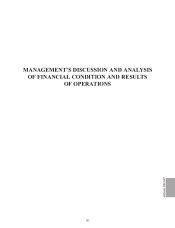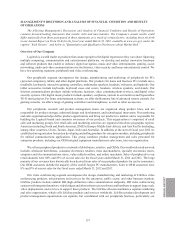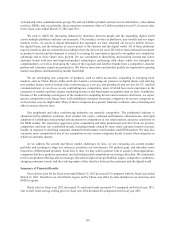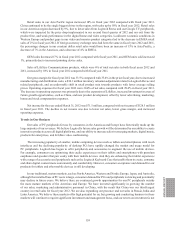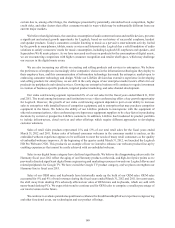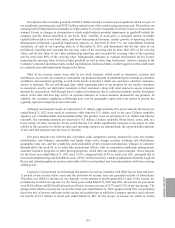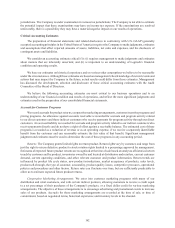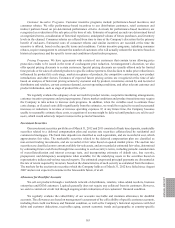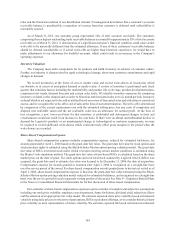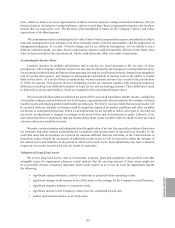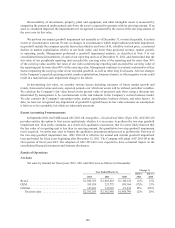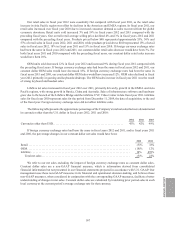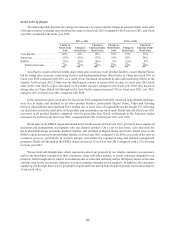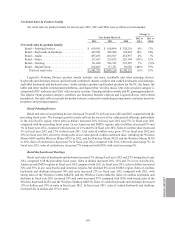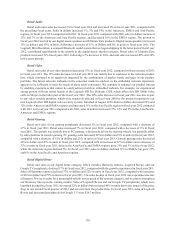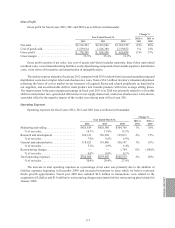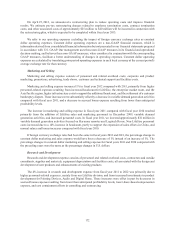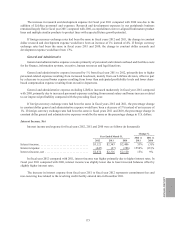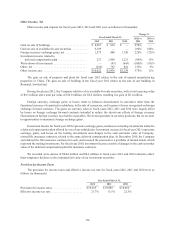Logitech 2012 Annual Report Download - page 175
Download and view the complete annual report
Please find page 175 of the 2012 Logitech annual report below. You can navigate through the pages in the report by either clicking on the pages listed below, or by using the keyword search tool below to find specific information within the annual report.
rates, which we believe are most representative of future exercise and post-vesting termination behaviors. We use
historical data to estimate pre-vesting forfeitures, and we record share-based compensation expense only for those
awards that are expected to vest. The dividend yield assumption is based on the Company’s history and future
expectations of dividend payouts.
The assumptions used in calculating the fair value of share-based compensation expense and related tax effects
represent management’s best estimates, but these estimates involve inherent uncertainties and the application of
management judgment. As a result, if factors change and we use different assumptions, or if we decide to use a
different valuation model, our share-based compensation expense could be materially different in the future from
what we have recorded in the current period, which could materially affect our results of operations.
Accounting for Income Taxes
Logitech operates in multiple jurisdictions and its profits are taxed pursuant to the tax laws of these
jurisdictions. The Company’s effective income tax rate may be affected by the changes in or interpretations of tax
laws in any given jurisdiction, utilization of net operating loss and tax credit carryforwards, changes in geographical
mix of income and expense, and changes in management’s assessment of matters such as the ability to realize
deferred tax assets. As a result of these considerations, we must estimate income taxes in each of the jurisdictions
in which we operate. This process involves estimating current tax exposure together with assessing temporary
differences resulting from different treatment of items for tax and accounting purposes. These differences result
in deferred tax assets and liabilities, which are included in the consolidated balance sheet.
We assess the likelihood that our deferred tax assets will be recovered from future taxable income, considering
all available evidence such as historical levels of income, expectations and risks associated with estimates of future
taxable income and ongoing prudent and feasible tax strategies. We believe it is more likely than not such assets will
be realized; however, ultimate realization could be negatively impacted by market conditions and other variables
not known or anticipated at this time. When we determine that we are not able to realize all or part of our deferred
tax assets, an adjustment is charged to earnings in the period when such determination is made. Likewise, if we
later determine that it is more likely than not that the deferred tax assets would be realized, the previously provided
valuation allowance would be reversed.
We make certain estimates and judgments about the application of tax law, the expected resolution of uncertain
tax positions and other matters surrounding the recognition and measurement of uncertain tax benefits. In the
event that uncertain tax positions are resolved for amounts different than our estimates, or the related statutes of
limitations expire without the assessment of additional income taxes, we will be required to adjust the amounts of
the related assets and liabilities in the period in which such events occur. Such adjustments may have a material
impact on our income tax provision and our results of operations.
Valuation of Long-Lived Assets
We review long-lived assets, such as investments, property, plant and equipment, and goodwill and other
intangible assets for impairment whenever events indicate that the carrying amount of these assets might not
be recoverable. Factors considered important which could require us to review an asset for impairment include
the following:
• significant underperformance relative to historical or projected future operating results;
• significant changes in the manner of use of the assets or the strategy for the Company’s overall business;
• significant negative industry or economic trends;
• significant decline in the Company’s stock price for a sustained period; and
• market capitalization relative to net book value.
ANNUAL REPORT
165


